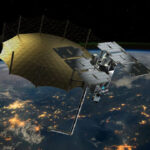February 9, 2023
ALEXANDRIA, Va. — There were reasons to be optimistic about the current and projected growth of the smallsat market as the 2023 SmallSat Symposium got underway in Silicon Valley. The world witnessed a record 186 launches in 2022 with smallsats accounting for 95% of the 2,521 spacecraft deployed. Steady demand signals from governments and growing commercial applications suggest a continued uptick in the smallsat market in 2023, but it will not be without challenges.
Compared to the bullishness of previous years, industry experts and economists are clear-eyed in acknowledging the potential pitfalls, from macroeconomic headwinds and supply chains to overcapacity and expanding the customer base.
During a panel discussion at the SmallSat Symposium, Shalini Bhatia, principal at Deloitte Consulting, noted the proliferation of NGSO players in recent years. “The reality is, not everybody’s going to win when there are a thousand-plus players in that market,” she said.
While reluctant to predict the “first casualty” of 2023, Fletcher Franklin, senior program manager at BryceTech, pointed to the long list of players in the remote sensing, noting “a lot of providers [are] not on orbit yet.”
The growth of the smallsat market has created a kind of Goldilocks scenario. Some say it’s too hot, with too much extra capacity and immature markets. Others anticipate governments and commercial consumers will quickly absorb new satellite services, driving demand beyond current capacity. Time will determine where the balance is just right.
Expanding the Consumer Market
Despite near-term hurdles, the overall satellite market has a strong growth trajectory. Euroconsult projects 2,500 satellites will be launched every year on average over the next decade. Government spending continues to be the largest revenue driver, but smallsat constellations run by commercial operators dominate—and will continue to dominate—in terms of the number of spacecraft.
This coincides with the expanded use of satellite for telecommunications, broadband connectivity, IoT and commercial imaging. Dr. Ward Hanson, a Stanford University lecturer in economics, was upbeat about the longer-term impact commercial satellite will have in enabling consumer applications and uses. “I think the insight you get from consumers is it always takes longer to adopt the technology than you think and you go further than you expected,” he said.
…
Read the full article: https://www.kratosdefense.com/constellations/articles/the-smallsat-markets-goldilocks-moment-too-hot-or-too-cold






